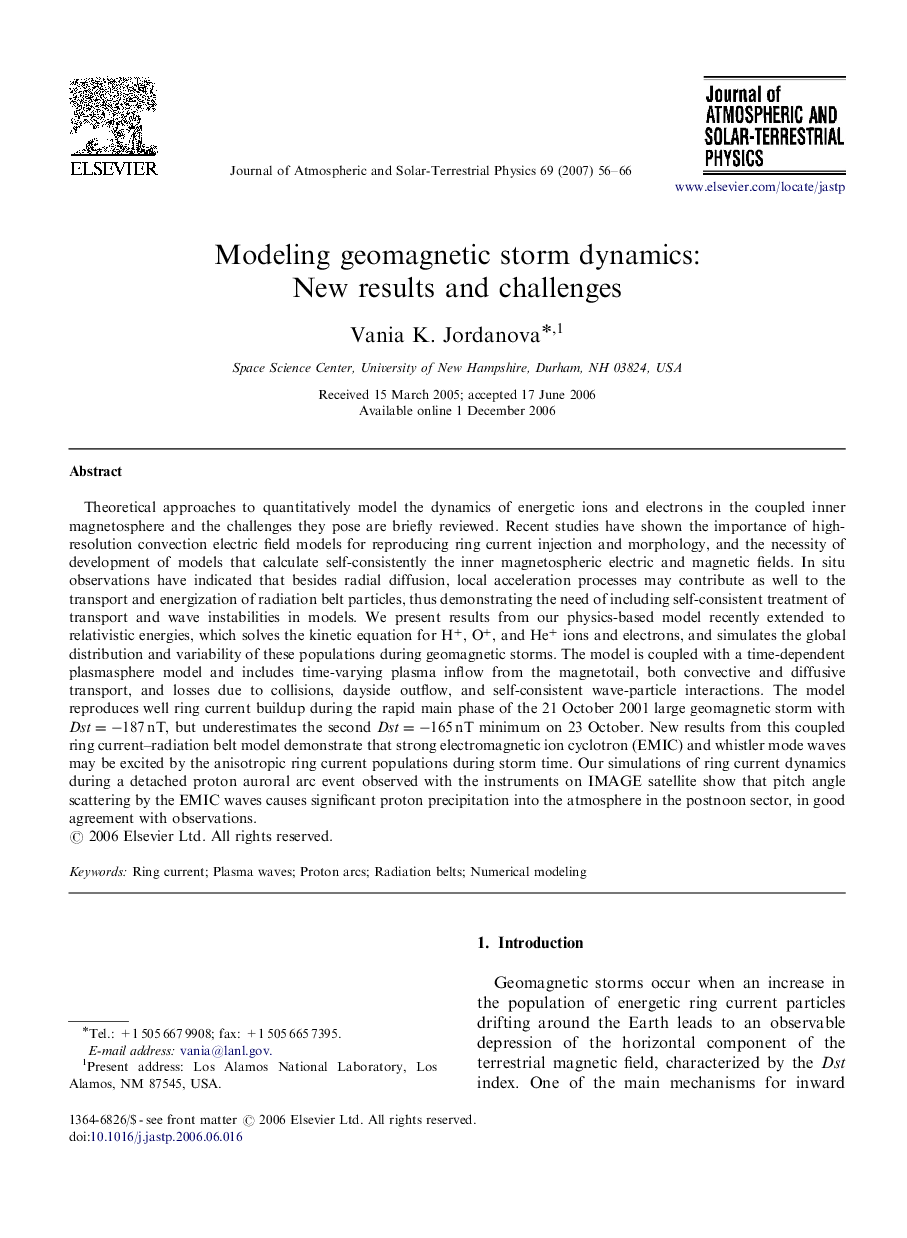| Article ID | Journal | Published Year | Pages | File Type |
|---|---|---|---|---|
| 1778210 | Journal of Atmospheric and Solar-Terrestrial Physics | 2007 | 11 Pages |
Theoretical approaches to quantitatively model the dynamics of energetic ions and electrons in the coupled inner magnetosphere and the challenges they pose are briefly reviewed. Recent studies have shown the importance of high-resolution convection electric field models for reproducing ring current injection and morphology, and the necessity of development of models that calculate self-consistently the inner magnetospheric electric and magnetic fields. In situ observations have indicated that besides radial diffusion, local acceleration processes may contribute as well to the transport and energization of radiation belt particles, thus demonstrating the need of including self-consistent treatment of transport and wave instabilities in models. We present results from our physics-based model recently extended to relativistic energies, which solves the kinetic equation for H++, O++, and He++ ions and electrons, and simulates the global distribution and variability of these populations during geomagnetic storms. The model is coupled with a time-dependent plasmasphere model and includes time-varying plasma inflow from the magnetotail, both convective and diffusive transport, and losses due to collisions, dayside outflow, and self-consistent wave-particle interactions. The model reproduces well ring current buildup during the rapid main phase of the 21 October 2001 large geomagnetic storm with Dst=-187nT, but underestimates the second Dst=-165nT minimum on 23 October. New results from this coupled ring current–radiation belt model demonstrate that strong electromagnetic ion cyclotron (EMIC) and whistler mode waves may be excited by the anisotropic ring current populations during storm time. Our simulations of ring current dynamics during a detached proton auroral arc event observed with the instruments on IMAGE satellite show that pitch angle scattering by the EMIC waves causes significant proton precipitation into the atmosphere in the postnoon sector, in good agreement with observations.
